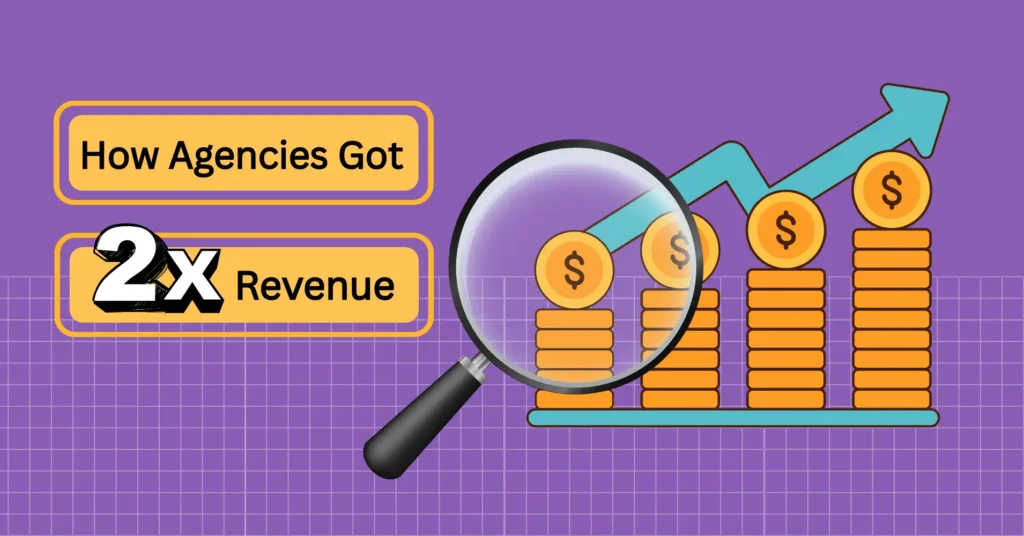
Google and Yahoo’s New Email Deliverability Rules: Here’s How You Prepare Before February 2024
Listen up, bulk emailers – the email marketing game is about to get real!
In October 2023, Gmail and Yahoo dropped a bombshell update – turning once-recommended practices into must-follow rules for email marketing.
The major focal points of these policies are the following:
- Authenticating your sender email domain
- Keeping the spam complaint below the threshold
- Enabling one-click unsubscribing and quick opt-out process
And, the rules are set to be put into practice from February 2024.
So, if you’re sending over 5000 emails daily, then these rules are non-negligible – when most of your clients’ emails end with “@gmail.com” or “@yahoo.com”.
So, how can you land your emails properly in their inbox? Simply by complying with new email deliverability rules.
And, this article can be your guide to success. So, without further ado, let’s find out what Gmail and Yahoo are cooking.
Overview: Yahoo & Gmail’s New Email Deliverability Rules
Yahoo and Gmail, the thought leaders in email services, are mixing things up with a fresh set of email deliverability rules – ready to become the industry norm.
“Starting in 2024, we’ll require bulk senders to authenticate their emails, allow for easy unsubscription, and stay under a reported spam threshold”
Neil Kumaran, Google
Though Google explicitly outlines the guidelines for Gmail, it’s reasonable to consider that Yahoo will likely follow a similar rule set.
However, you don’t have to worry too much, as these rules are not something you, as a marketer never heard of before!
So, let’s see the changes inside Gmail’s rules for emails:
- Secure your emails with authentication (DKIM, SPF, DMARC)
- Stand out by sending emails from your unique custom domain
- Simplify unsubscribing with a one-click unsubscribe option
- Ensure prompt processing of unsubscribes within two days
- Keep the spam complaint rate below a mere 0.3%
Who Should Follow These New Email Deliverability Rules?
The new rules are designed for both large and small email senders.
“These changes are like a tune-up for the email world, and by fixing a few things under the hood, we can keep email running smoothly.”
Neil Kumaran, Google
Although, some of the guidelines only apply to companies that send more than 5K emails per day.
But, those who send less than 5,000 emails to Gmail addresses daily, can skip:
- DMARC Authentication
- One-click unsubscribe
Here’s a comparison of regulatory guidelines for bulk email senders and all email senders per day:
| New Email Deliverability Rules – Gmail | |
| Bulk Senders (<5000 emails) | All Senders |
| SPF or DKIM email authentication | SPF or DKIM email authentication |
| RFC 5322 email formatting compliance | RFC 5322 formatting compliance |
| Valid PTR records, rDNS | Valid PTR records, rDNS |
| Spam complaint rate below 0.3% | Spam complaint rate below 0.3% |
| No Gmail impersonating in From: headers | No Gmail impersonating in From: headers |
| Email forwarding requirements | Email forwarding requirements |
| DMARC email authentication for sender domain | – |
| One-click unsubscribe | – |
| The sender domain must be aligned with either SPF or DKIM domain | – |
Note: As per Google, once you’re considered a bulk email sender, you’ll be permanently labeled as that.
Our suggestion: To be safe, adapt to new policies – no matter your list size or mailing frequency.
Consequences of Ignoring the New Email Deliverability Rules
Before knowing the consequences, first, you need to understand the purpose of implying such email delivery rules.
Well, in plain terms – the ultimate goal is to make inboxes of users:
- Safe
- Relevant
- Less cluttered with spam
So, ignoring these mandatory guidelines may lead to:
- Blocked emails
- Diminished sender reputation
- Flags marking your emails as spam
- Rejection by recipients’ email providers
- Potential blacklisting of your domain or IP address
Our Tips: Adapting to the New Email Deliverability Guidelines
Since the changes are imminent, so the bad news for all marketers is – these are mandatory guidelines to follow!
But the good news?
You’ve got until February 2024 to get in sync with Google’s new standards.
Now, to ensure your emails make it into Google and Yahoo’s inboxes, take the following steps:
Send Emails Using Your Own Custom Domain
Sending emails in bulk using free domains like @gmail.com or @yahoo.com isn’t the best move. It leaves a not-so-great impression on your brand, making clients question your professionalism and credibility.
Free email services work best for personal stuff, but for business, it’s a different story – your emails might get rejected or land in the spam folder.
What’s the solution? Get your custom domain. With a unique domain, you can brand your emails and marketing campaigns, boosting:
- Email Deliverability
- Brand Credibility
- Trustworthiness
Our suggestion: Here’s a guide to creating a custom email for your domain.
Implement Email Authentication
Email authentication or sender domain authentication is like getting a license, it’s a process of earning the trust of your clients so they feel safe to open your emails.
In other words, it builds legitimacy and brand reputation by preventing:
- Spam
- Phishing Attempts
- Malicious Activities
Although, previously google required some form of authentication for emails. But, as per new guidelines, brands (must) authenticate through three key email authentication protocols – SPF, DKIM, and DMARC.
Here are the reasons why authentication policies are important to implement:
- Use SPF (Sender Policy Framework) to specify which servers are permitted to send emails on behalf of your domain.
- Add digital signatures to the emails using DKIM (DomainKeys Identified Email), so Yahoo and Gmail can verify an email sent from you.
- Extend SPF and DKIM by utilizing DMARC. Specify how emails from your domain should be handled if SPF or DKIM checks fail.
Our suggestion: A detailed article on how to set up DMARC, SPF, and DKIM can be found here.
Enable One-click Unsubscribing
Just as you make subscribing a breeze, Google and Yahoo want unsubscribing to be just as simple.
While people leaving your email list seems like an unpleasant thing, having genuinely interested contacts matters more than a lengthy, inactive list.
To make the process smooth, Google and Yahoo want you to add two things in all the emails you send:
- An unsubscribe link
- One-click unsubscribe header
The rules go further – You need to process unsubscribe requests within 2 days and send no further emails to avoid any spam complaints.
Our suggestion: Flagging your emails as spam affects reputation and damages email marketing KPIs, on the other hand – a simple unsubscription won’t do any harm. In FluentCRM, you can also enable one-click unsubscribe from Settings > Compliance.

Grow with Affordable Marketing Automation Inside Your WordPress Dashboard!

Keep a Low Spam Complaint Rate
Bulk senders will be required to keep the spam complaint rate below 0.3%.
While the ideal practice is keeping spam complaints under 0.1% (one per 1000 emails), Gmail sets a bit more threshold limit at 0.3% for spam rates.
Hence, if a fair share of your emails are marked as spam, your:
- Sender reputation will decrease
- Emails finding it hard to reach inbox
- Future emails end up in the spam folders
Ever wondered why Google and Yahoo got strict about spam?
Stats by AAG will clarify – a whopping 3.4 billion spam messages hit inboxes daily, with 48% of 2022’s emails classified as – you guessed it – SPAM!
So, to safeguard your email delivery:
- Avoid using spam-triggering words
- Add unsubscribe link to your emails
- Never email people who unsubscribed
Our suggestion: If your spam complaint rate grows above 0.1%, consider there’s an urgent need for improvement.
Adapt, Evolve, Succeed!
As days pass and technology advances – changes are imminent. Adapting to new changes is how we perform well in this digital landscape.
Likewise, Google and Yahoo’s new email deliverability rules – a shield against spam, malware, and phishing threats.
The mission? Transforming emails into a secure, clean, trustworthy, and clutter-free mode of communication.
In our view, don’t consider these changes as an obstacle for you to reach your clients; rather embrace and adapt to these changes before the deadline. It’ll not only improve your brand’s reputation but will also enhance engagement, trust, professionalism, and crucially, usher in quality leads.
Frequently Asked Questions
Still have some questions in mind? Here we’ve tried to answer some:









Leave a Reply